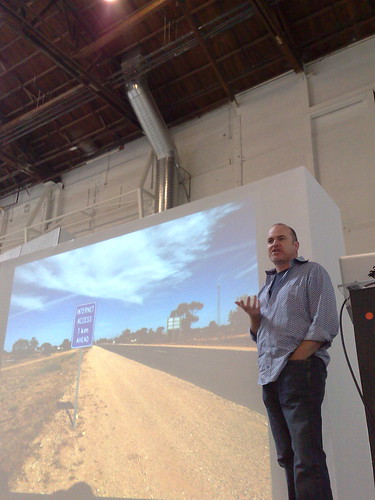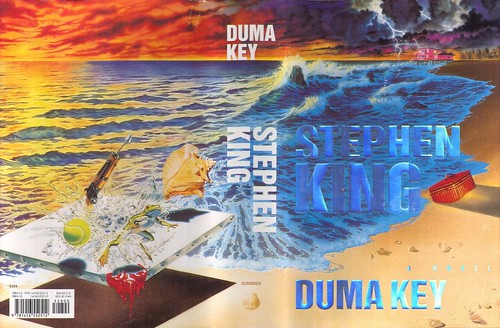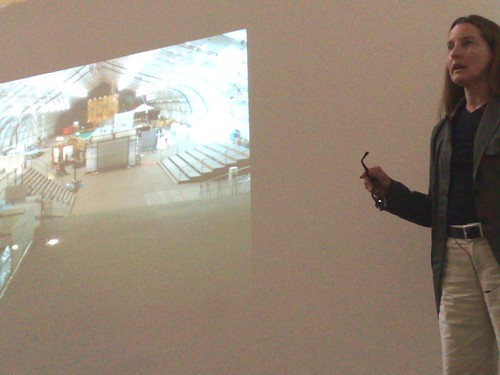Death Certificate - Paul Dourish at Design Dialogues, Art Center College of Design
Image by G A R N E T
Guest Curator: Garnet Hertz
This lecture series explores key concepts in computational media to empower individuals to imagine, collaborate, provoke, and prototype through computing.
As a result of its widespread adoption, digital media has transitioned from "new media" to a ubiquitous part of contemporary life. This shift from novelty to familiarity has considerable ramifications for academic institutions working in the fields of media arts and digital culture. Exploring the formal potentials of information and networked technologies is no longer of significant interest: information technologies need to be understood as an embedded part of culture and history. Digital cultural practices must also work to extend their parent disciplines, including the studio arts, media history and theory, design, computer science and engineering.
Each speaker in the "Computation After New Media" series will focus on one word— a single term they feel is a core part of their work within the framework of computation. These lectures will be aimed at exploring the underlying structures of computationalism, providing an important leverage into the philosophy, languages, and principles of digital media.
October 22: Paul Dourish
Paul Dourish is a Professor of Informatics in the Donald Bren School of Information and Computer Sciences at UC Irvine, with courtesy appointments in Computer Science and Anthropology. He teaches in the Informatics program and in the interdisciplinary graduate program in Arts Computation and Engineering. His primary research interests lie at the intersection of computer science and social science; he draws liberally on material from computer science, science and technology studies, cultural studies, humanities, and social sciences in order to understand information technology as a site of social and cultural production. In 2008, he was elected to the CHI Academy in recognition of his contributions to Human-Computer Interaction.
Dourish is the author of "Where the Action Is: The Foundations of Embodied Interaction" (MIT Press, 2001), which explores how phenomenological accounts of action can provide an alternative to traditional cognitive analysis for understanding the embodied experience of interactive and computational systems. Before coming to UCI, he was a Senior Member of Research Staff in the Computer Science Laboratory of Xerox PARC; he has also held research positions at Apple Computer and at Rank Xerox EuroPARC. He holds a Ph.D. in Computer Science from University College, London, and a B.Sc. (Hons) in Artificial Intelligence and Computer Science from the University of Edinburgh.
Internet Access 1km Ahead - Paul Dourish at Design Dialogues, Art Center College of Design
Image by G A R N E T
Guest Curator: Garnet Hertz
This lecture series explores key concepts in computational media to empower individuals to imagine, collaborate, provoke, and prototype through computing.
As a result of its widespread adoption, digital media has transitioned from "new media" to a ubiquitous part of contemporary life. This shift from novelty to familiarity has considerable ramifications for academic institutions working in the fields of media arts and digital culture. Exploring the formal potentials of information and networked technologies is no longer of significant interest: information technologies need to be understood as an embedded part of culture and history. Digital cultural practices must also work to extend their parent disciplines, including the studio arts, media history and theory, design, computer science and engineering.
Each speaker in the "Computation After New Media" series will focus on one word— a single term they feel is a core part of their work within the framework of computation. These lectures will be aimed at exploring the underlying structures of computationalism, providing an important leverage into the philosophy, languages, and principles of digital media.
October 22: Paul Dourish
Paul Dourish is a Professor of Informatics in the Donald Bren School of Information and Computer Sciences at UC Irvine, with courtesy appointments in Computer Science and Anthropology. He teaches in the Informatics program and in the interdisciplinary graduate program in Arts Computation and Engineering. His primary research interests lie at the intersection of computer science and social science; he draws liberally on material from computer science, science and technology studies, cultural studies, humanities, and social sciences in order to understand information technology as a site of social and cultural production. In 2008, he was elected to the CHI Academy in recognition of his contributions to Human-Computer Interaction.
Dourish is the author of "Where the Action Is: The Foundations of Embodied Interaction" (MIT Press, 2001), which explores how phenomenological accounts of action can provide an alternative to traditional cognitive analysis for understanding the embodied experience of interactive and computational systems. Before coming to UCI, he was a Senior Member of Research Staff in the Computer Science Laboratory of Xerox PARC; he has also held research positions at Apple Computer and at Rank Xerox EuroPARC. He holds a Ph.D. in Computer Science from University College, London, and a B.Sc. (Hons) in Artificial Intelligence and Computer Science from the University of Edinburgh.
King, Stephen - Duma Key (2008 HB)
Image by sdobie
Duma Key
Scribner, January 2008, 611 pages
Cover art by Mark Stutzman
Jacket design by John Fulbrook III
From the dust jacket:
No more than a dark pencil line on a blank page. A horizon line. maybe. But also a slot for blackness to pour through...
A terrible construction site accident takes Edgar Freemantle's right arm and scrambles his memory and his mind, leaving him with little but rage as he begins the ordeal of rehabilitation. A marraige that produced two lovely daughters suddenly ends, and Edgar begins to wish he hadn't survived the injuries that could have killed him. He wants out. His psychologist, Dr. Kamen, sugguests a "geographic cure," a new life distant from the Twin Cities and the building business Edgar grew from scratch. And Kamen suggests something else.
"Edgar, does anything make you happy?"
"I used to sketch."
"Take it up again. You need hedges...hedges against the night."
Edgar leaves Minnesota for a rented house on Duma Key, a stunningly beautiful, eerily undeveloped splinter of the Florida coast. The sun setting into the Gulf of Mexico and the tidal rattling of shells on the beach calls out to him. A visit from Ilse, the daughter he dotes on, starts his movement out of solitude. He meets a kindred spirit in Wireman, a man reluctant to reveal his own wounds, and then Elizabeth Eastlake, a sick old woman whose roots are tangled deep in Duma Key. Now Edgar paints, sometimes feverishly, his exploding talent both a wonder and a weapon. Many of his paintings have a power than cannot be controlled. When Elizabeth's past unfolds and the ghosts of her childhood begin to appear, the damage of which they are capable is truly devastating.
The tenacity of love, the perils of creativity, the mysteries of memory and the nature of the supernatural - Stephen King gives us a novel as fascinating as it is gripping and terrifying.
---------------------------------------------------------------------------
Acquired: 2008-02-23
Started: 2009-07-02
Finished: 2009-08-23
Edgar Freemantle loses his right arm in a construction accident. During his recovery, his marriage breaks up, and he moves to a beach house in Duma Key, Florida to try and make a new start on his life. He meets the other somewhat unusual inhabitants of the Key and takes up painting, but soon finds that the painting may be controlled by forces beyond his control.
There is nothing terribly new here. A lot of things such as the ancient evil force and the artist protagonist whose art has some magical powers are ideas King has used before numerous times, but he does it very well here, and I found it to be one of King's most enjoyable recent books.
Sharon Daniel speaks at Design Dialogues, Art Center
Image by G A R N E T
Design Dialogues Fall 2010: Computation After New Media
Media Design Program, Art Center College of Design, Pasadena, California
Guest Curator: Garnet Hertz
This lecture series explores key concepts in computational media to empower individuals to imagine, collaborate, provoke, and prototype through computing.
As a result of its widespread adoption, digital media has transitioned from "new media" to a ubiquitous part of contemporary life. This shift from novelty to familiarity has considerable ramifications for academic institutions working in the fields of media arts and digital culture. Exploring the formal potentials of information and networked technologies is no longer of significant interest: information technologies need to be understood as an embedded part of culture and history. Digital cultural practices must also work to extend their parent disciplines, including the studio arts, media history and theory, design, computer science and engineering.
Each speaker in the "Computation After New Media" series will focus on one word— a single term they feel is a core part of their work within the framework of computation. These lectures will be aimed at exploring the underlying structures of computationalism, providing an important leverage into the philosophy, languages, and principles of digital media.
October 1: Sharon Daniel, UCSC
October 8: Eddo Stern, UCLA
October 22: Paul Dourish, UCI
October 29: TBA
November 19: Casey Reas, UCLA, author, Form + Code in Design, Art, and Architecture
December 3: Celia Pearce, Georgia Tech, author Communities of Play: Emergent Cultures in Multiplayer Games and Virtual Worlds
Design Dialogues brings provocateurs from the worlds of design, art, academia, and technology into the MDP Studio. Each term, a guest curator is invited to build a series around a theme of their choosing.
Meetings: 12-2 pm. Talks: 3-6 pm in the Wind Tunnel Gallery. Open only to Media Design students, alumni, and faculty.
chicken alley piano doors.jpg
Image by zen
No comments:
Post a Comment